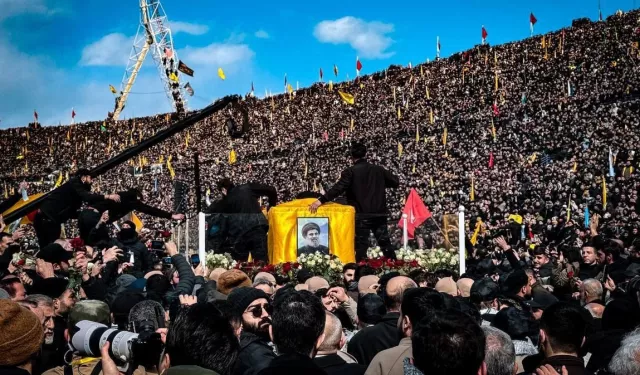One year after Israel assassinated Hezbollah Secretary General Hassan Nasrallah, a leaked Israeli intelligence report has surfaced detailing Mossad's role in the extrajudicial killing—part of a wider campaign of covert operations in violation of international law.
The Israeli operation was timed to coincide with an intensive aerial bombardment on the Harat Hreik neighborhood in Beirut’s southern suburb, a densely populated civilian area long vilified by Israel as a Hezbollah stronghold. Nasrallah had reportedly been scheduled to meet with senior commanders, including the Quds Force’s local chief and Hezbollah’s southern front commander, Ali Karki.
According to the Israeli account published in the Yedioth Ahronoth, Mossad agents—disguised as civilians—illegally infiltrated the Harat Hreik neighborhood carrying packages concealing advanced surveillance equipment. The tracking devices, developed in 2022, were engineered for near-perfect accuracy. The team reportedly planted them throughout a residential building suspected of housing a Hezbollah command center before escaping undetected, the report describes.
Hours later, Israeli warplanes launched a saturation bombing campaign, dropping 83 US-manufactured BLU-109 bunker-buster bombs—each weighing one ton and capable of penetrating reinforced structures—on the site. Then-Israeli Defense Minister Yoav Gallant reportedly demanded the payload be doubled to ensure maximum destruction. Two days later, on Sept. 29, the Israeli army claimed responsibility for killing Nasrallah, Karki, and 20 others.
The airstrike was preceded by a wave of sabotage operations that included the midday remote detonation of Hezbollah members’ communication pagers and two-way radios, causing severe injuries to resistance fighters and civilians, including women and children, alike.
Despite the scale and planning of the operation, the Israeli government remained silent for nearly a month before Prime Minister Benjamin Netanyahu confirmed Mossad’s involvement.
Nasrallah’s killing marked a dangerous turning point in Israel’s ongoing war on Lebanon. The assault had begun on Oct. 8, 2023, with widespread bombings and military incursions. By Sept. 23, 2024, the campaign had intensified into full-scale war, killing more than 4,000 people and wounding over 17,000, according to Lebanese government figures.
Although a ceasefire agreement was reached on Nov. 27, 2024, Israeli violations of the truce continued with impunity. Lebanese officials reported an additional 269 deaths and 568 injuries after the ceasefire was supposed to take effect.
Despite provisions requiring withdrawal from southern Lebanon, Israeli occupation forces continue to hold 5 strategic hills seized during the war. Tel Aviv has made its exit conditional on Hezbollah’s disarmament and the complete redeployment of Lebanese army units along the southern frontier—demands rejected outright by Hezbollah.
The group has accused Israel of persistently violating the terms of the ceasefire and exploiting international silence to maintain control over Lebanese territory. It continues to assert that armed resistance remains essential for safeguarding Lebanon’s sovereignty in the face of ongoing aggression and occupation.
